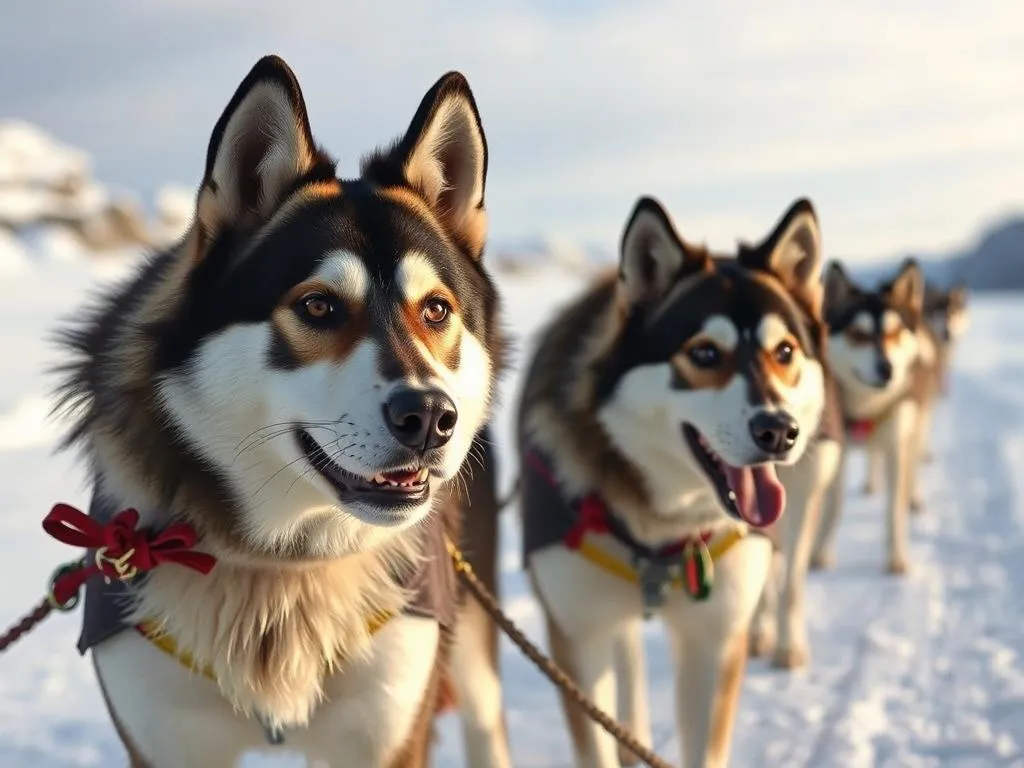
Introduction
Sled dogs have captured the imagination of people around the world, serving as both working animals and beloved companions. Their significance extends beyond mere utility; they embody the spirit of adventure and survival in some of the harshest environments on Earth. Understanding sled dogs facts, including their breeds and roles, is essential for anyone interested in these remarkable animals. This article aims to educate readers on the history, characteristics, training, and care of sled dogs, providing a well-rounded perspective on their impact in various cultures and settings.
The History of Sled Dogs
Origins of Sled Dogs
The roots of sled dogs can be traced back thousands of years to the Arctic regions, where indigenous peoples utilized these hardy animals for transportation, hunting, and companionship. Cultures such as the Inuit, Chukchi, and other Arctic tribes relied heavily on sled dogs to navigate the icy terrains of Alaska, Canada, and Siberia. Sled dogs were indispensable in their daily lives, demonstrating loyalty and resilience in the face of extreme weather conditions.
Evolution of Sled Dog Breeds
Over time, different breeds of sled dogs emerged, each adapted to specific tasks and environments. The Alaskan Malamute and the Siberian Husky are two of the most well-known sled dog breeds, but they are not the only ones. Other breeds, such as the Samoyed and the Greenland Dog, also have rich histories as working dogs. These breeds were selectively bred for traits such as strength, endurance, and a capacity for cold weather, allowing them to excel in sledding and other demanding activities.
Sled Dogs in Modern Times
Today, sled dogs continue to play vital roles in various domains. They are prominently featured in sports like dog sled racing, with events such as the Iditarod and Yukon Quest showcasing their speed and agility. Beyond sports, sled dogs are also crucial in search and rescue operations, providing assistance in remote areas where traditional means of transportation may be unavailable. Their legacy as working animals remains strong, making them a symbol of endurance and teamwork.
Unique Characteristics of Sled Dogs
Physical Attributes
Sled dogs are remarkable animals, characterized by their size, strength, and endurance. Most sled dog breeds possess a robust physique, with powerful legs and a well-muscled body that allows them to pull heavy sleds over long distances. Adaptations for cold climates include a thick double coat, which provides insulation and protection against harsh weather. Their bodies also store fat, which serves as an energy reserve during strenuous activities.
Temperament and Behavior
In addition to their physical capabilities, sled dogs are known for their sociable nature and strong pack mentality. They thrive in a group setting, exhibiting loyalty to their human handlers and fellow dogs. Their intelligence and trainability make them suitable for a variety of tasks, from recreational sledding to competitive racing. However, prospective owners should be aware that sled dogs also require mental stimulation to prevent boredom and destructive behavior.
Health Considerations
While sled dogs are generally healthy animals, they are prone to certain health issues. Common concerns include hip dysplasia, eye problems, and skin conditions. Regular veterinary care is essential to monitor their health, and maintaining a balanced diet is crucial for their overall well-being. Responsible ownership involves being aware of these health considerations to ensure sled dogs lead happy and healthy lives.
Popular Sled Dog Breeds
Alaskan Malamute
The Alaskan Malamute is one of the oldest and largest sled dog breeds, known for its strength and endurance. Originally bred for heavy hauling, these dogs possess a powerful build and a thick coat that keeps them warm in frigid conditions. Malamutes thrive in active environments and require regular exercise to stay healthy. Ideal living conditions include spacious homes with access to outdoor areas where they can run and play.
Siberian Husky
The Siberian Husky is another iconic sled dog breed, recognized for its striking blue or multicolored eyes and friendly disposition. Huskies are known for their incredible stamina and speed, making them formidable competitors in dog sled racing. While they share some similarities with Malamutes, Huskies are generally leaner and possess a more playful demeanor. These dogs require an active lifestyle and are best suited for families who can provide ample exercise and companionship.
Other Notable Breeds
Beyond the Alaskan Malamute and Siberian Husky, several other breeds are noteworthy in the sled dog community. The Samoyed, with its friendly disposition and fluffy white coat, was bred for herding and pulling sleds in Siberia. The Greenland Dog is another strong breed, known for its endurance and ability to work in harsh conditions. Each of these breeds has unique traits and historical uses, making them fascinating subjects for dog enthusiasts.
Training and Care for Sled Dogs
Training Techniques
Training sled dogs requires a combination of socialization, obedience training, and specialized skills for sledding and racing. Early socialization is critical to help them develop positive behaviors and adaptability in various environments. Basic obedience training lays the groundwork for more advanced techniques, such as harnessing and pulling sleds. Positive reinforcement methods, including treats and praise, are effective in encouraging desired behaviors.
Nutrition and Diet
Proper nutrition is vital for sled dogs, as they expend significant energy during training and racing. A high-quality diet rich in protein and fat is essential for maintaining their strength and endurance. Owners should consult with veterinarians to determine the best dietary options, which may include commercial dog food specifically designed for working breeds or a well-balanced homemade diet. Feeding schedules should be consistent, with attention to portion sizes based on activity levels.
Exercise Requirements
Sled dogs have high exercise needs, requiring daily physical activity to stay healthy and happy. Regular walks, runs, and playtime are essential to keep them engaged. Activities like skijoring, where a person skis while being pulled by a dog, can provide both exercise and bonding time. Moreover, mental stimulation through training sessions or interactive toys is crucial to prevent boredom and promote a well-rounded lifestyle.
The Role of Sled Dogs in Sports
Dog Sled Racing
Dog sled racing has become a popular sport, showcasing the incredible abilities of sled dogs and their handlers. Major races like the Iditarod and Yukon Quest attract competitors from around the world, highlighting the unique challenges posed by extreme weather and rugged terrain. Training for these races involves building endurance through long-distance runs, along with maintaining the health and well-being of the dogs. The bond between mushers and their teams is a critical component of success in the sport.
Other Competitive Events
In addition to racing, sled dogs participate in various competitive events, such as weight pulling and skijoring. Weight pulling tests a dog’s strength and determination, while skijoring combines skiing with dog sledding for an exciting winter activity. Each event requires specific training techniques and strategies, providing opportunities for sled dogs and their handlers to showcase their skills in different contexts.
Sled Dogs in Pop Culture
Sled Dogs in Movies and Literature
Sled dogs have made significant appearances in movies and literature, influencing public perception and interest in these remarkable animals. Films like “Balto” and “Eight Below” depict the courage and loyalty of sled dogs in challenging circumstances, capturing the hearts of audiences worldwide. These portrayals have helped to raise awareness about the unique roles that sled dogs play in human history and culture.
Sled Dogs as Companions
The trend of adopting sled dog breeds has grown in recent years, with many people drawn to their friendly personalities and adventurous spirit. However, potential owners should consider the specific needs and characteristics of sled dogs before bringing one into their home. These breeds require ample exercise, social interaction, and mental stimulation, making them better suited for active families or individuals who can commit to their care.
Conclusion
Sled dogs are more than just working animals; they represent a rich history and cultural significance that spans thousands of years. From their origins in indigenous cultures to their roles in modern sports and companionship, sled dogs embody resilience and loyalty. Understanding sled dogs facts is vital for responsible ownership and appreciation of these breeds. Whether you are considering adding a sled dog to your family or simply seeking to learn more about them, a commitment to their care and well-being is essential for their happiness and health.
By embracing the knowledge about sled dogs, we can ensure that their legacy continues, fostering a deeper connection between humans and these extraordinary animals.








